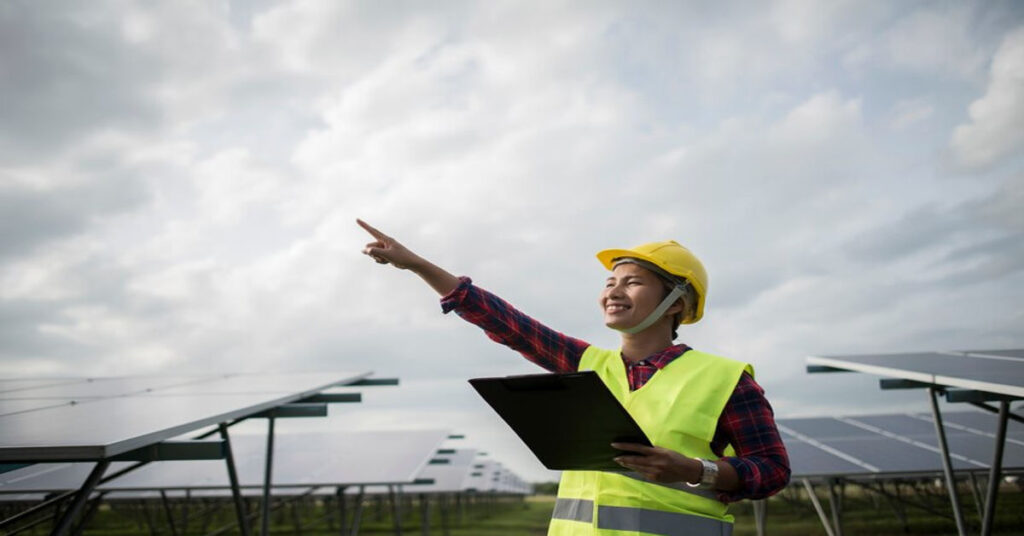Are you considering making the switch to solar energy? If so, one of the first steps you’ll encounter is a solar site survey. This essential process not only helps determine if your location is suitable for solar panels but also plays a significant role in estimating costs. Understanding the average cost of a solar site survey can save you time and money while ensuring that your transition to renewable energy goes smoothly. In this post, we’ll explore everything from what a solar site survey entails to tips for successful execution, helping you make informed decisions on your journey toward sustainable energy solutions. Let’s dive in!
How to Perform A Solar Site Survey
Performing a solar site survey starts with assessing your property’s characteristics. Look at the roof orientation, shading from trees or buildings, and overall space available for installation. Each element can significantly impact energy production.
Next, gather data on local weather patterns and sunlight exposure throughout the year. This information will help determine how much energy your solar system could generate.
Consult with a professional installer who can analyze the collected data. They will provide insights tailored to your unique situation, ensuring you maximize efficiency while minimizing costs in the long run.
What Is A Solar Site Survey?
A solar site survey is a crucial assessment conducted to determine the feasibility of installing solar panels on a property. It examines various factors such as location, shading, roof condition, and orientation.
The main goal is to identify the best possible setup for maximizing energy production while minimizing costs.
During this process, professionals gather detailed data that influences design decisions and system sizing. A thorough survey lays the foundation for an efficient solar installation tailored to your specific needs.
Solar Site Survey Checklist
A solar site survey checklist is essential for ensuring a successful installation. Start by checking the roof’s condition and orientation. Look for any shading from trees or buildings that could impact energy production.
Next, assess the electrical infrastructure. This includes evaluating existing wiring and panel capacity to determine if upgrades are needed for optimal performance.
Take note of local regulations and permitting requirements specific to your area. Understanding these factors can streamline the installation process and prevent costly delays later on. Following this checklist helps ensure you cover all critical aspects before moving forward with your solar project.
On-site Vs. Remote Solar Site Surveys
On-site solar site surveys involve physical inspections of the property. Trained professionals assess shading, roof conditions, and other critical factors firsthand. This hands-on approach ensures a thorough evaluation.
Remote solar site surveys utilize technology to gather data from afar. Using satellite imagery and software tools, experts can analyze potential sites without visiting them physically. This method is often quicker and less disruptive.
While on-site surveys provide detailed insights, remote options save time and reduce costs. Each has its merits depending on project requirements and location specifics, allowing for flexibility in planning your solar installation.
Drones for Solar Site Surveys
Drones are revolutionizing solar site surveys, offering an efficient way to gather data. Equipped with high-resolution cameras and sensors, they can quickly capture aerial imagery of large areas, making it easier to assess potential solar sites.
Using drones minimizes the need for extensive manual inspections. They can reach difficult terrains that might otherwise be inaccessible. This capability not only saves time but also enhances safety by reducing risks associated with climbing or navigating hazardous locations.
The data collected by drones can be integrated into advanced software for analysis. This results in accurate modeling and decision-making regarding solar installations, streamlining the entire survey process.
Advanced Imaging, Mapping and Remote Sensing
Advanced imaging technologies have revolutionized solar site surveys. High-resolution satellite imagery allows for detailed landscape analysis, revealing potential obstacles and optimal panel placements.
Mapping software enhances this process by providing precise measurements and visual representations of the area, ensuring accurate planning.
Remote sensing techniques collect data from a distance, minimizing on-site disruptions while still capturing essential environmental information Solar Site Survey Average Cost. These innovations not only improve survey efficiency but also contribute to more effective solar energy system designs tailored to specific locations.
Tips For A Successful Solar Site Survey
Preparation is key for a successful solar site survey. Gather all necessary documentation, including property boundaries and existing utility plans. This ensures you have a clear understanding of the landscape.
Communication with stakeholders is essential. Discuss your goals with local authorities, contractors, and neighbors to avoid any surprises during the process. Clear expectations set everyone on the same page.
Be adaptable during the survey itself. Conditions can change unexpectedly due to weather or environmental factors. Staying flexible allows your team to effectively address challenges that may arise while ensuring accurate data collection.
Permitting & Zoning Requirements
Navigating permitting and zoning requirements is crucial before conducting a solar site survey. Local regulations can vary widely based on your area, affecting installation timelines and costs.
Before starting, check with local authorities to understand the specific permits needed for solar projects. This often includes building permits or electrical permits that ensure compliance with safety codes.
Zoning laws may dictate where you can install solar panels, especially in residential areas. Understanding these rules will help avoid delays and additional expenses during the project lifecycle.
Solar Soft Costs and Location
Solar soft costs refer to the non-hardware expenses associated with solar energy systems. This includes installation labor, permitting fees, and marketing costs. These can vary significantly based on location.
Different regions will have different regulations and incentives that impact these soft costs. For example, areas with robust solar policies may enjoy lower permit fees or faster approval times.
Moreover, local market conditions affect competition among installers. In saturated markets, prices might drop due to increased options for consumers. Understanding your local landscape is essential for accurately estimating your total investment in a solar system.
Conclusion
Understanding the Solar Site Survey Average Cost is crucial for anyone considering solar energy. This initial step can significantly impact your overall project budget and timeline. By knowing what to expect, you can make informed decisions.
Investing in a thorough survey helps ensure optimal system performance and compliance with local regulations. It also aids in identifying potential challenges early on, saving time and money down the line.
Whether you opt for an on-site visit or leverage advanced technologies like drones, being prepared will enhance your experience. A successful solar project begins with a well-executed site survey tailored to your specific needs.
FAQS
What is included in a solar site survey?
A typical solar site survey includes assessing roof conditions, shading analysis, structural integrity checks, and electrical system evaluation.
How long does a solar site survey take?
Most surveys can be completed within one to three hours depending on the complexity of the installation area.
Are remote surveys accurate?
While remote surveys using satellite imagery offer quick insights, they may not capture all nuances compared to an on-site assessment.
Do I need permits for my solar project?
Yes, local regulations often require specific permits before installing any solar energy systems.
What factors influence the average cost of a solar site survey?
Factors include location accessibility, property size, equipment needed for surveying, and whether it’s an on-site or remote assessment.
Can drones improve efficiency during surveys?
Absolutely! Drones provide detailed aerial views quickly and safely while identifying potential issues otherwise missed from the ground level.







